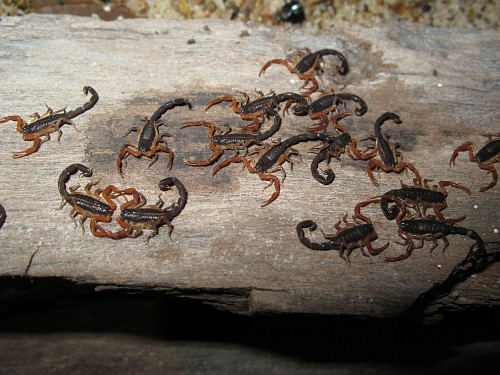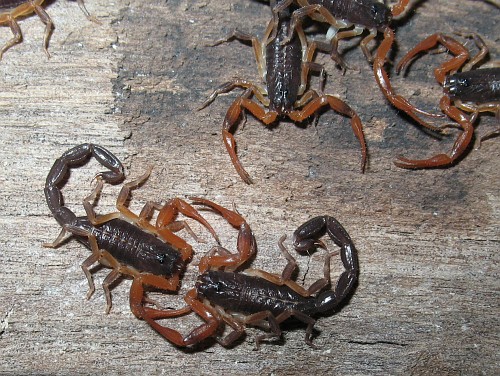

In the afternoon I moved quite a lot 2nd instar scorpions (species Centruroides gracilis) from the enclosure they shared with their mother to a plastic container each. The reason for separation is that, especially in a small enclosure, the scorpions might start to eat each other with this species. And since the little ones rarely climbed back to the safety of their mother's back, they are old enough to be moved to their own enclosure.

After quite some time; it's not easy to capture a single tiny scorpion on a piece of paper by pushing it with a small brush, and dropping it into a plastic bottle, I noticed that I was running out of bottles, fast. So I counted the scorpions that were left in the enclosure, and counted about 20 more. Since I had in total now 38 containers with a second instar scorpion each, some filled a few days earlier, it looks like the mother had about 60 babies.

In the first photo you can see two 2nd instar scorpions in a position that in adult scorpions marks the start of the promenade à deux, the mating dance. Since I hadn't seen this before in young scorpions I decided to make a close-up photo of the "couple".

One thing that I had seen often with such a large group of juvenile scorpions is one scorpion moving its tail sideways towards another scorpion, often pushing the other one. I've seen solitair adults do this as well when I introduce prey, for example a house cricket, in their enclosure. Instead of stinging the prey, they push is away, sometimes even slapping the animal with their tail. To me always a clear sign to remove (carefully) the prey animal because otherwise it will end up dead, but uneaten.